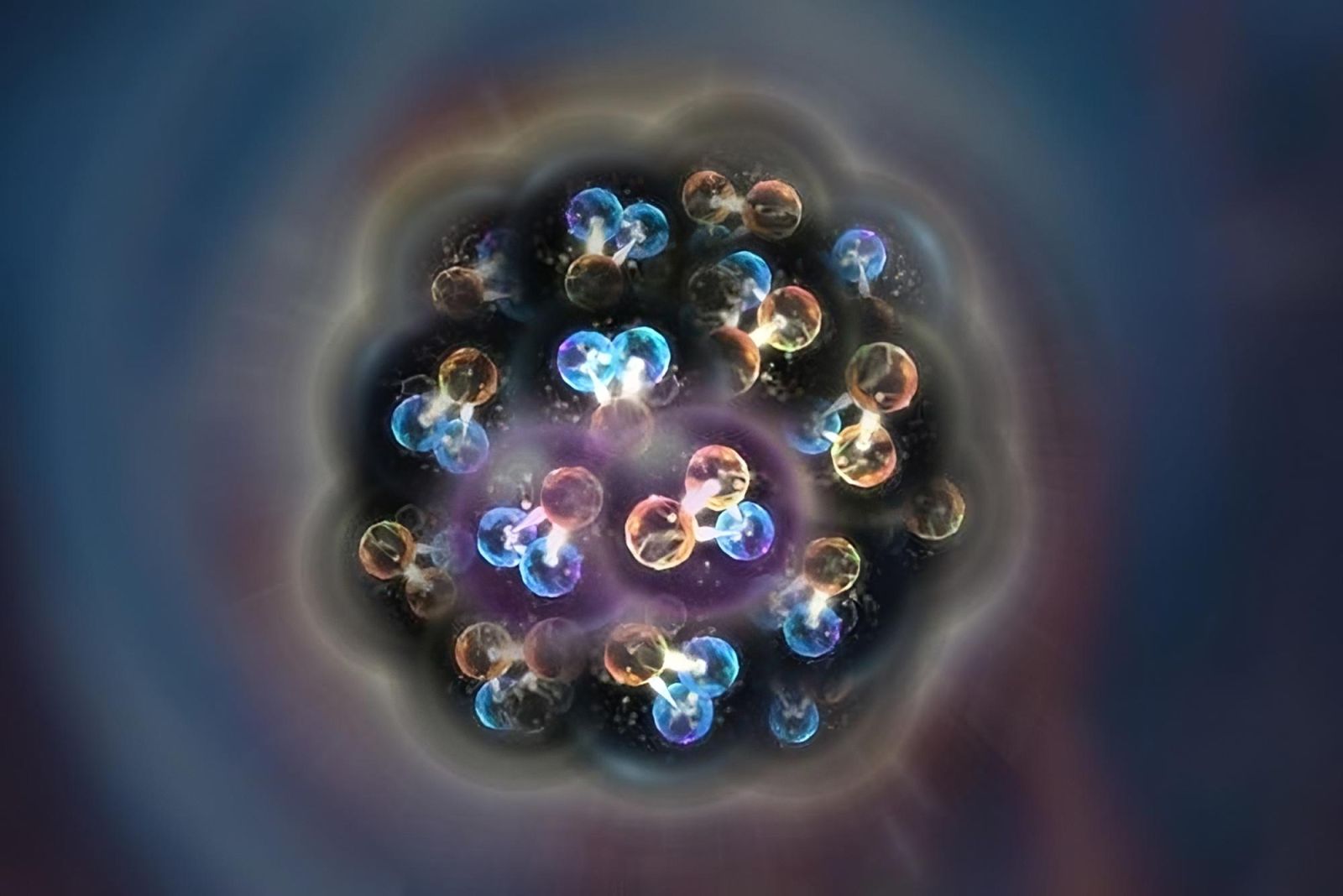The first image of an atomic nucleus, containing quarks and gluons
Published by Cédric,
Article author: Cédric DEPOND
Source: Physical Review Letter
Other Languages: FR, DE, ES, PT
Article author: Cédric DEPOND
Source: Physical Review Letter
Other Languages: FR, DE, ES, PT
Follow us on Google News (click on ☆)
In the mid-20th century, physicists discovered that protons and neutrons are the main components of atomic nuclei. But a new revelation changed everything: these particles are made up of quarks.

For the first time, it has become possible to describe the characteristics of atomic nuclei, previously explained by the existence of protons and neutrons, with the help of quarks and gluons.
A correlated nucleon pair is highlighted here in purple.
Source: FIJ PAN
In the 1960s, researchers realized that quarks interact through gluons. This model, revolutionary at the time, was nevertheless incomplete in explaining certain low-energy phenomena. Scientists hit a wall: how to unify the behavior of protons and neutrons at low energy with that of quarks and gluons at high energy? The enigma persisted until recently.
Physicists, particularly from the Nuclear Physics Institute of Krakow, developed a model combining data from both high-energy and low-energy collisions. This model finally explores this frontier.
Thanks to experiments carried out at CERN's LHC, they analyzed atomic nuclei under high energy, revealing the internal distribution of quarks and gluons. This breakthrough enables a finer understanding of nuclear interactions. The research focused on eighteen atomic nuclei, from carbon to gold. The results confirmed that most nucleon pairs consist of a proton and a neutron, especially in heavy nuclei.
The perspectives offered by these discoveries could revolutionize nuclear physics and pave the way for new experiments to unlock the secrets of matter.
What is a quark?
A quark is an elementary particle that makes up protons and neutrons within the atomic nucleus. There are six types (called "flavors"): up, down, charm, strange, top, and bottom. Quarks interact strongly with each other via gluons, particles that transmit the strong nuclear force, one of the fundamental forces in physics.
Quarks are held together by gluons, which act as invisible "glue." These gluons exert the strong nuclear force, the most powerful of the fundamental forces, and allow quarks to stay inside protons and neutrons. This interaction ensures the stability of atomic nuclei.
The quark and gluon model is a theoretical description that explains the internal structure of protons and neutrons. At high energies, this approach is used to study how quarks and gluons are distributed inside subatomic particles, and how they behave during energetic collisions, such as those carried out in particle accelerators.